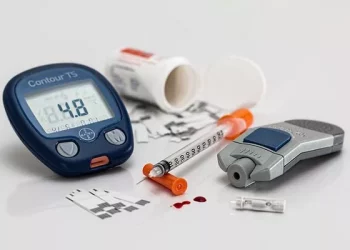Recent studies have revealed a simple yet highly effective strategy for improving metabolic health—walking after meals. This habit, which has long been touted for general wellness, is now recognized as a powerful tool in managing blood sugar spikes, particularly in individuals at risk for diabetes and other metabolic disorders.
The Postprandial Window: Why Timing Matters
The period following a meal, known as the postprandial window, is characterized by a sharp rise in blood glucose and insulin levels. These spikes can lead to metabolic stress and, over time, increase the risk of conditions like insulin resistance and cardiovascular disease. Traditional diabetes management has primarily focused on fasting glucose levels, but emerging research indicates that controlling postprandial glucose is even more crucial for long-term health.
Insulin secretion typically follows a biphasic pattern—first a rapid release to counteract initial glucose increases, followed by a sustained release. However, individuals with insulin resistance often experience prolonged or exaggerated glucose surges, making the post-meal period a critical target for intervention.
How Walking Affects Blood Glucose and Insulin Sensitivity
Skeletal muscle plays a pivotal role in glucose uptake, with physical activity triggering insulin-independent pathways to transport glucose into cells. After a meal, light to moderate walking enhances this process, improving muscle glucose uptake and decreasing the intensity of glucose peaks. Remarkably, even without intense exercise, these benefits are accessible to individuals with varying fitness levels.
Studies have shown that walking within 30 minutes of eating provides the greatest impact on glucose control. Delaying activity past this window diminishes its effectiveness, as the glucose peak has already been reached.
What the Research Shows: Meta-Analyses and Clinical Trials
Recent meta-analyses and clinical trials support the positive effects of post-meal walking. For instance, a study by Italian researchers demonstrated that just 30 minutes of brisk walking significantly reduced post-meal glucose spikes. Additionally, a 2022 meta-analysis from the University of Limerick found that short bouts of walking after meals were more effective at lowering glucose and insulin levels than simply standing.
Another study from New Zealand revealed that walking for 10 minutes after each meal was more effective at lowering blood sugar throughout the day than a single, extended walk. These findings highlight that even short, consistent walks can substantially improve glycemic control.
Walking vs. Other Interventions
While pharmacological treatments like GLP-1 receptor agonists and lifestyle strategies such as intermittent fasting offer promising benefits, walking after meals has several unique advantages. Unlike medication, which can come with side effects and high costs, walking is free, simple, and accessible to almost everyone. Moreover, it doesn’t require strict adherence to dietary regimens or medical supervision, making it a sustainable option for long-term health.
Practical Applications for Diabetes and Obesity Prevention
For those managing prediabetes or type 2 diabetes, walking after meals can help stabilize blood sugar and improve long-term glycemic control. Studies show that even a brief 10 to 15-minute walk after meals can prevent the progression of prediabetes to full-blown diabetes and can complement other treatments.
Post-meal walking also helps address obesity by reducing insulin spikes that promote fat storage. In addition, regular walking lowers the oxidative stress associated with fluctuating blood glucose levels, a major risk factor for cardiovascular disease.
Enhancing Adherence with Technology
Wearable devices and fitness apps can further support the habit of post-meal walking. These tools can remind individuals to walk and track their progress, making it easier to integrate this simple practice into daily routines.
Policy Implications and Public Health Campaigns
The evidence supporting post-meal walking suggests that it should be incorporated into public health guidelines. Encouraging short walks after meals in workplace wellness programs, along with community initiatives to create pedestrian-friendly environments, could improve public health outcomes.
Incorporating this practice into health policies could reduce the burden of diabetes, obesity, and cardiovascular disease, offering a low-cost, high-reward strategy for better health worldwide.
Related topics:
Enhancing the Injection Experience: Bridging the Knowledge Gap in Diabetes Treatment
New CGM-Based Method Promises Easier and Cheaper Early Detection of Diabetes
Sugary Drinks Linked to Gut Microbiome Alterations and Increased Diabetes Risk in Latino Populations























